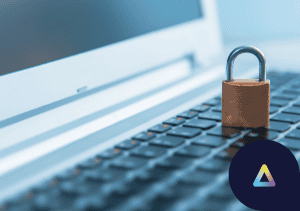Work at home (WaH) deployments can incur a number of costs that may not be immediately obvious. For the employer, the WaH director, the CTO/CIO, really anyone in charge of a WaH program, reducing costs while maintaining an effective WaH solution is the goal. In this post we are going to be answering two main questions: What are the costs involved for employers when providing WaH enabled devices to employees? And what are the ways Secure Remote Worker can reduce these costs?
The main costs employers should to be aware of in a WaH scheme are:
- Breaching of security compliances
- Device procurement
- Logistics
- IT support costs
- Employee downtime
Breaching of security compliances
While there may have been some allowance initially in 2020 due to the rush to WaH, security auditing is returning (Mark Hillary, IT Decisions), and compliance standards like PCI DSS, HIPAA, and GDPR are all still vital. As we go through in this previous blog on compliance standards, breach of these standards result in substantial fines. Using PCI DSS as an example, a data breach can incur penalties of up to €20 million, or 4% of your annual global turnover – whichever of these is higher. Though an extreme example, it shows how vital it is to meet these QSA’s requirements. It should also show how important potential customers rate their data security when choosing a contact center.
While it may be tempting to simply dispatch laptops with a VPN and call it a day, this would not be enough to meet compliance standards, as the potential penalties should a breach occur could be substantial.
Secure Remote Worker was explicitly built with compliance standards in mind. Independently assessed by Coalfire Systems and Schellman & Company, Secure Remote Worker meets the QSA requirements for PCI DSS, HIPAA, and GDPR for the endpoint.
{% video_player “embed_player” overrideable=False, type=’scriptV4′, hide_playlist=True, viral_sharing=False, embed_button=False, autoplay=False, hidden_controls=False, loop=False, muted=False, full_width=False, width=’1920′, height=’1080′, player_id=’33060704642′, style=” %}
Watch the full interview on our Security and Compliance page.
Device procurement
Due to the variety of solutions and their asking prices it can be difficult to estimate a general average. However, at any scale, it is safe to say that it is costly to provide new devices to employees for WaH. Using laptops as an example, excluding logistics, prices for mid-range laptops can range anywhere from $650 to $1,000 per device. If a company were acquiring these devices for 1,000 employees; an employer would be paying anywhere between $650,000 to $1,000,000.
Secure Remote Worker is, on average, 40% more cost effective than acquired/purchased hardware (depending on the value of the comparing hardware). This is because Secure Remote Worker installs on the employees’ personal devices, no hardware needs to be purchased, only the license for the software.
Secure Remote Worker is on average 40% more cost effective than acquired hardware, 75% when you include logistical costs.
Logistics
Logistics are a thorn in the side for any company enabling WaH. When talking about deploying hardware to employees, 35% of the total costs comes down to logistics (Shipping, warehousing, transport, & admin costs), as we talk about in our blog about onboarding, the downtime that occurs due to logistics can also be substantial. We will go through this downtime more later.
So how does Secure Remote Worker avoid logistics? Secure Remote Worker is a software-based, secure BYOD solution. The software can be instantly deployed from a central location to be installed on the employees’ personal machines, eliminating the need for logistics and any associated costs.
Steve Mosser – CEO of Sensée.
IT and onboarding costs
Support from both the IT and HR teams must be provided to employees transitioning to WaH, and of course, to new hires. This time is not free, IT teams report, on average, spending 1-2 hours per employee when onboarding. If we apply that to the thousand employee example from earlier, even assuming 50% require absolutely no assistance from IT we can see the impact (See table further down to see the impact of this compared to Secure Remote Worker).
With Secure Remote Worker’s Validation Tool, onboarding is reduced from 1-2 hours per employee to an average of 10 minutes per employee. This is due to the Validation Tool automating the majority of checks required to vet a device for secure BYOD, and allowing the IT team to provide employees with easily accessible guides on how to resolve issues. From an HR perspective, this eliminates one of the most timely and tedious aspects of BYOD – the vetting of potential hires’ devices and environment. Our customers report that Secure Remote Worker reduces the staff cost during onboarding by over 88%!
Employee downtime
During downtime periods, the employer, functionally, is paying for nothing. As mentioned earlier, even without the logistical complexities of 2021, delays on average of 2-3 days have been reported between dispatching the device and when the employee receives it. Meaning the employee is unable to work for 2-3 days, despite the employer paying their salary!
Secure Remote Worker eliminates this downtime, as IT can instantly deploy links to install Secure Remote Worker and it’s Validation Tool onto the employees’ personal machines, allowing them to get up and running with a single click. Speedy onboarding, thanks to Secure Remote Worker’s Validation Tool, also helps to reduce this downtime.
As we can see some of the costs associated with WaH can be substantial, however the ability to provide WaH to employees is both vital for employee well-being in 2021, and necessary to maintain competitive advantage (Peter Ryan, Ryan Strategic Advisory).
Secure Remote Worker allows the employer to reduce costs while enabling first-in-class secure BYOD for WaH.
Have questions on how ThinScale can help you save on costs? Get in touch with us by clicking the button below!





